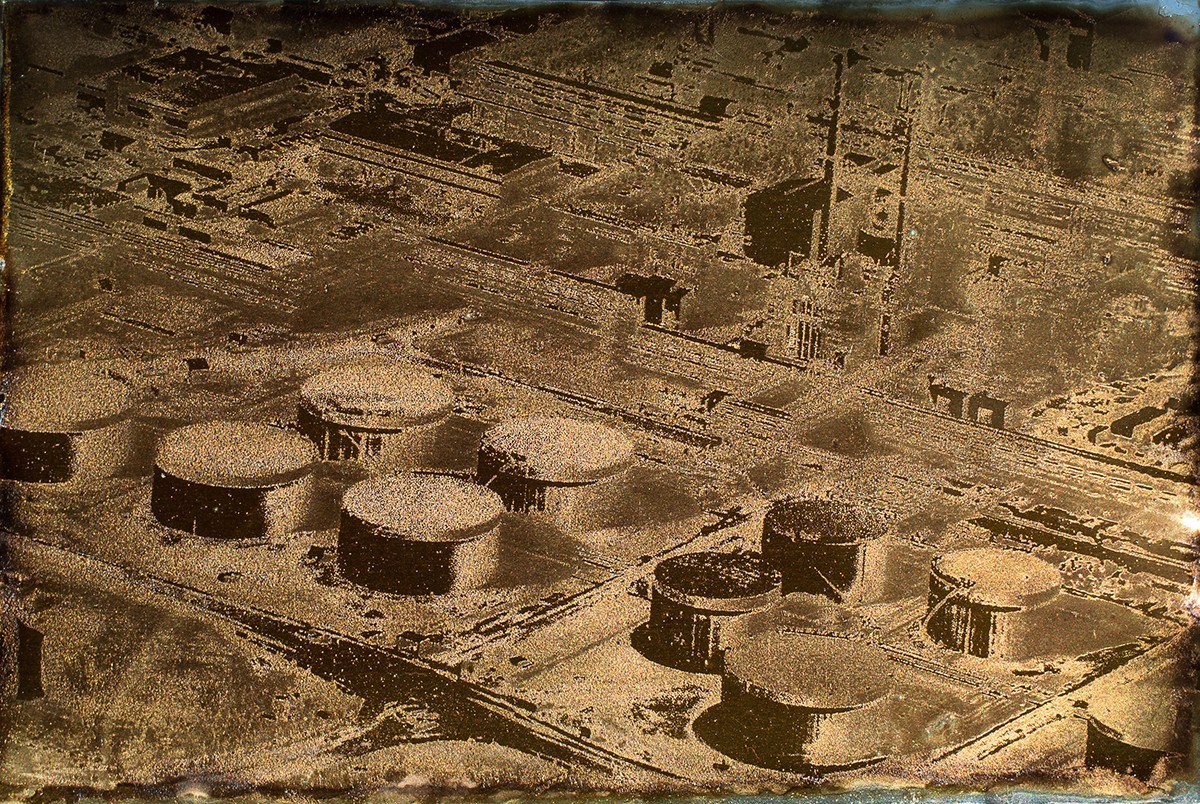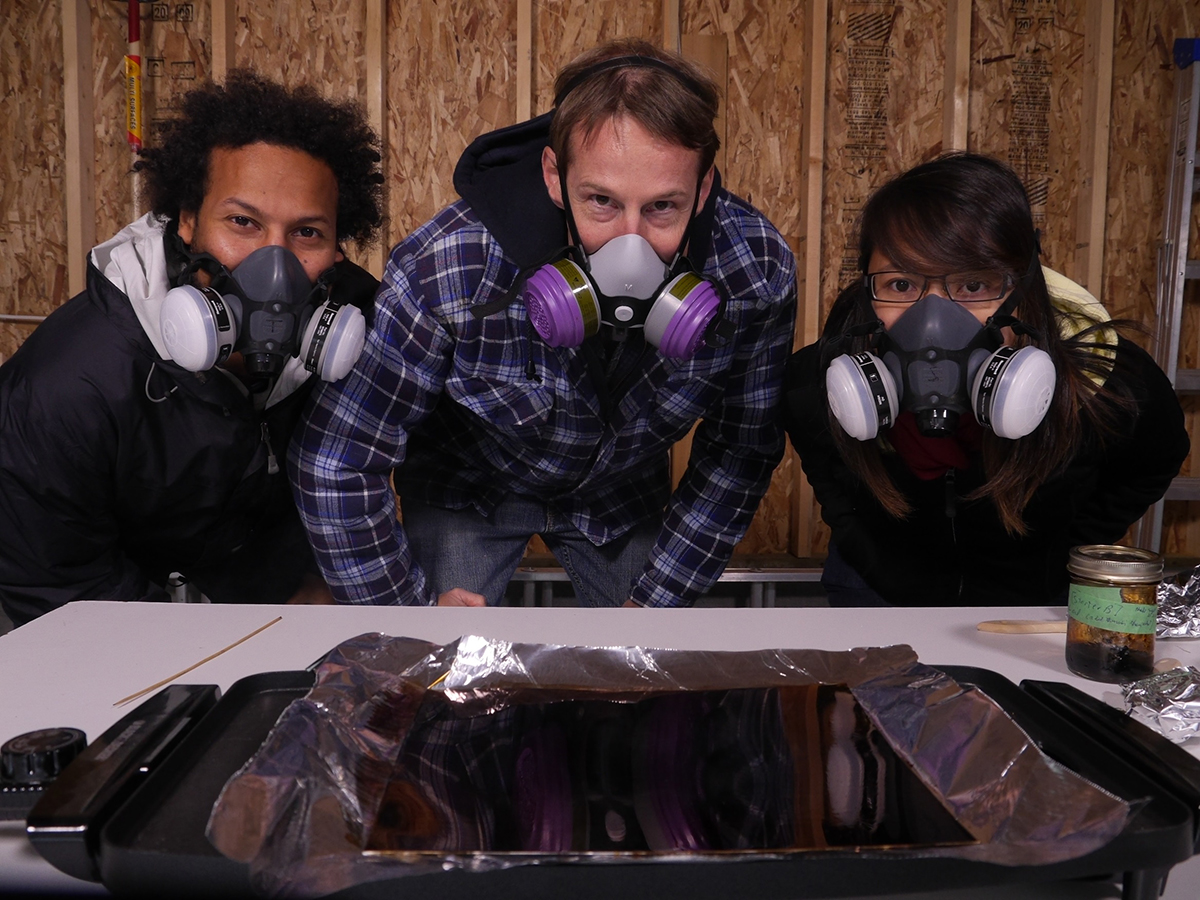
Photograph of the Alberta Tar Sands developed by Warren Cariou and his assistants using Athabasca bitumen
Alberta’s tar sands: Is there beauty in toxicity?
A better picture is emerging of exactly how toxic is the sludge discarded as waste in the Alberta oil sands. The picture can be breathtaking, in several ways.
“I wanted to try something new in my approach to this toxic, valuable and fascinating substance,” says Warren Cariou, associate professor, English, film and theatre, Faculty of Arts. Cariou holds a Canada Research Chair in Narrative, Community and Indigenous Cultures at the U of M, and is also director of the Centre for Creative Writing and Oral Culture.
In 2013, he was doing research in Alberta, on the shores of the Athabasca River, working on some writing and film projects about the tar sands.
One of the main constituents of the tar sands material is bitumen, a heavy petroleum by-product that is foul-smelling and is of great concern to environmentalists, as well as those living in the areas near the tar sands. Through his research, Cariou realized that one very early photographic technique developed by French scientist Nicephore Niepce almost 200 years ago involved using a material called bitumen of Judea.
Cariou explains: “Could it be, I wondered one day, that the bitumen in the Athabasca tar sands was the same kind of substance as Nipece’s bitumen of Judea? And if so, was it possible that Athabasca bitumen could be used to make photographs?”
In consultation with world experts on the history of photography, Cariou and his graduate students recreated Niepce’s photographic process using bitumen they had collected near the tar sands. After many frustrating experiments and much trial-and-error, Cariou’s team had produced some examples of what he has termed petrographs.

Warren Cariou (middle) with media lab technician Teddy Zegeye-Gebrehiwot (left) and graduate student Sabrina Mark have used bitumen collected near the Athabasca tar sands to develop photographs
The time-consuming and painstaking process involves boiling bitumen for many hours, skimming off the tar and spreading it as a thin coating on a mirror. The plate is then heated to “set” the film, a transparency is pressed onto the plate and then left in direct sunlight for as much as sixteen hours. After exposure, the image is developed using kerosene and light oil. The parts of the image that received the most sunlight remain on the plate while those with less light are dissolved away, leaving behind a positive monochrome “print.”
Cariou’s photographic subjects were the tar sands plants and strip mines themselves. He says, “I hope the resulting view will give us new perspectives on the pervasiveness and the symbolic potency of petroleum in contemporary culture.”
He notes that to produce a petrograph requires much patience but also exposure to dangerous fumes and materials.
On the first day of the petrography experiments, he says, “I remember thinking to myself … ‘This is toxic stuff.’ The air around the tar sands was a miasma of headache-inducing vapours, but somehow I hadn’t bargained for the ongoing foulness of my chosen medium.”
Yet, when the petrographs are dry, they don’t have any odour and they are in their own way breathtakingly beautiful, although they are, technically, simply “filth smeared on a plate.” And realistically, Cariou acknowledges that the bitumen mixture isn’t any more dangerous than conventional oil-based paints and other chemicals in everyday household use.
“We live with the potential for toxicity because we feel that the benefits outweigh the dangers,” he adds.
Although most works published about the tar sands emphasize the negative aspects of the petroleum development, Cariou is fascinated by the interplay and contrast between the beauty of the photographic medium and the toxicity of the landscape portrayed.
For more about Warren Cariou’s work, see warrencariou.com






